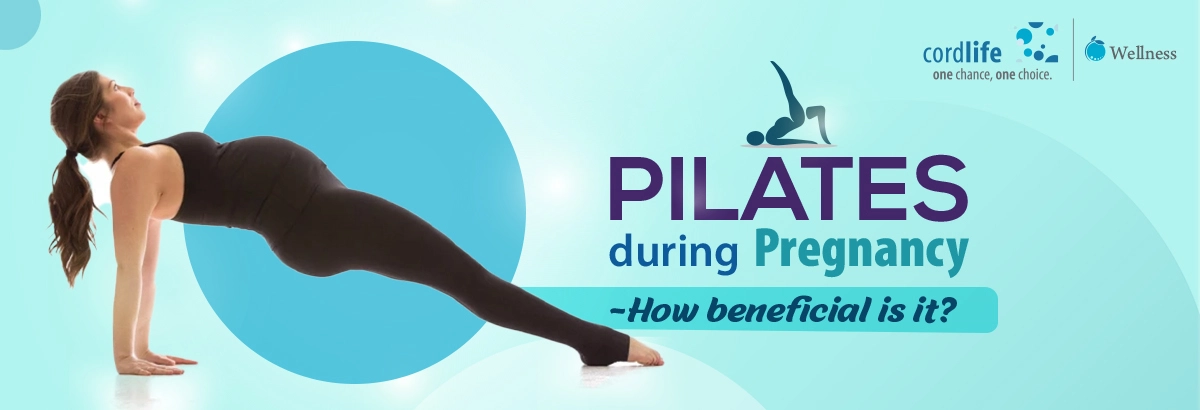Table of Contents
Exercising during pregnancy is important. Research reveals exercising during pregnancy can keep away problems such as gestational hypertension, reduce labour duration, and give you a better chance of normal delivery. In addition, exercise benefits during pregnancy include better mental health and lower incidences of post-natal depression.
Pilates for pregnant women is a simple, safe, and effective way to ensure good health throughout pregnancy and even afterwards.
Benefits of Pilates For Pregnant Women
However, you must be cautious about the workout regimen you choose during this phase.
If you plan to start a new workout regimen focusing on your pregnancy, then consider Pilates. There are several benefits of Pilates during pregnancy.
- One of the major highlights of Pilates pregnancy benefits is—it is a low-impact exercise. It means, Pilates exercises for pregnancy are safe to do, and easy to modify and sustain as your pregnancy advances.
- Most aches and pains during pregnancy can be attributed to poor posture due to your changing body. Prenatal Pilates helps you correct your posture and avert discomfort and pain.
- Pilates boosts your core strength and muscle strength, especially around the hips, which is very critical. It helps your body handle the growing weight of the baby more efficiently, without sustaining damage.
- Much like yoga, Pilates also hinges on controlled breathing. This helps you become more self-aware and mindful, reduces stress, and improves relaxation.
- Pilates is especially useful in strengthening your pelvic floor muscles, which helps immensely during labour. This helps prevent the incontinence issues that many women face during pregnancy and post-delivery.
Pilates works your entire body and gives your whole muscular structure a great workout when done right. You can build core strength, balance and confidence plus correct your posture with Pilates. It also helps as you recover from childbirth and maintain the stamina needed to care for your newborn.
Some Tips For Doing Pilates Through Your Pregnancy
While there is no doubt about the benefits of Pilates during pregnancy, it is also important to do it safely. If you are already into Pilates, then there is no question of when to tell the Pilates instructor about pregnancy. Tell your instructor when your pregnancy is confirmed. This will help the instructor to:
- Design the right exercises for you
- Consider your overall physical state to determine safe exercises
- Be cautious of your condition during the workout session
Here’s What You Can Do While Performing Pilates For Pregnant Women
- Pilates while pregnant first trimester needs extra care. This is the maximum risk phase. Keep the intensity of your Pilates workout low so that you do not stress your body too much. Make sure you are in the ‘comfortable’ zone when you work out and stop if you find yourself getting winded or too tired.
- Pilates while pregnant first trimester usually avoids sit-up exercises for your abs. Inversions are also avoidable, especially if you are feeling nauseated or extra tired.
- Use lighter weights than you normally do to avoid stressing your body. Remember that a lot of change is happening inside now.
- Be cautious when you are doing your Pilates while pregnant second trimester. By then, you will be more used to being pregnant and may feel more energetic than in the first trimester. Do not overdo the exercising because of this.
- Note that your centre of gravity is changing and that will affect your balance. Pay special attention to your posture when you exercise and follow the instructor’s cues with attention.
- Pilates while pregnant second trimester can include side-lying poses, and standing or sitting poses. Keep supine poses to a minimum and stay in this position for only short periods.
- Avoid lying on your tummy. These are the main Pilates exercises to avoid when pregnant. Your instructor will guide you on alternative exercises.
- Come the third trimester and it is essential to focus on being relaxed and comfortable again.
- Chest and back opening moves are great now to keep your posture right as your belly weight pulls you forward.
- Other Pilates exercises to avoid when pregnant in your third trimester are inner thigh work and double leg lifts. Find alternatives for both supine and prone positions too.
- Focus on working the joints gently but consistently. But do not pull or push them to the max at this time.
- Throughout the three trimesters, ensure you stay hydrated and don’t let your body overheat.
Choose a Pilates instructor who is well-versed in training pregnant women. Talk to her/him about what your doctor has advised and discuss exercise plans that you are comfortable with. Pilates for pregnant women is a great option for safe exercise that can help during pregnancy, childbirth, and beyond. Get the right trainer, follow a safe regimen, and enjoy your fitness while you experience the beautiful journey of motherhood.
